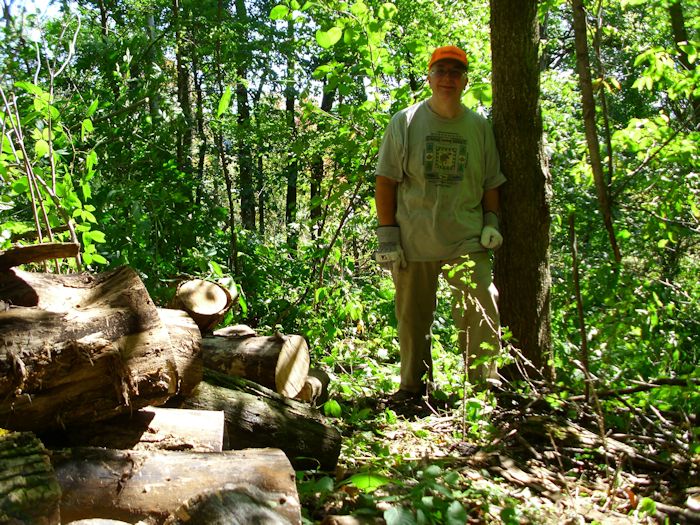I’m not quite ready to kick back and enjoy the wood stove yet, but I may be getting there. The wood pile is starting to look mighty nice and the cool evenings are definitely inviting. In a week or two, I imagine that we’ll need to start having evening fires and that’s when the crafting will begin. Of course, I participate in a number of crafts, but this winter I plan to focus on making some socks. Warm socks are a must have item during the cold winter months.
In Knitting for the Gentleman Farmer you see a pair of socks I made using my Knifty Knitter, but I’d like to do more. The socks I’ve made so far are more akin to slippers, than something you’d put on your feet before your shoes. So, I recently purchased Loom Knitting Socks: A Beginner’s Guide to Knitting Socks on a Loom with Over 50 Fun Projects (No-Needle Knits), which is a book designed for us who like to avoid needles because they’re a tad hard to handle. This book tells you quite a lot about making socks in just a few pages. For example, you discover how to size your socks properly so they don’t slide around on the wearer’s feet (as mine are prone to do).
The book uses looms of various sorts, one of which is the Knifty Knitter. I may end up getting a few other loom types, which wouldn’t bother me at all. It would be nice to create socks that I could wear anywhere with shoes and that simply isn’t possible using the Knifty Knitter. Fortunately, I already have some print socks (socken bedrucken in German) that are very versatile. I’ll also have to get used to working with thinner yarn and possibly add a bit more light so I can actually see what I’m doing.
What I like best about this book is that the author takes time to demonstrate how you can create an amazing array of patterns using a loom. The Knifty Knitter instructions only show how to create a straight knit-nothing very fancy at all. I’ll be able to use the techniques I learn in this book to create nicer looking hats, blankets, and scarves as well (generally, I don’t make other items, even though I certainly could). If you’re looking at getting into crafting, but aren’t sure where to start, you can find some quilt ideas here.
Unlike a lot of books on the market, this one provides realistic levels for each of the patterns. In addition, there is a nice mix of models (young, old, male, and female). It gets tiring to see books that feature all of the patterns being worn by a young woman. Seeing a guy wear some of the items is a nice change for me and will make me feel more comfortable giving those particular sock patterns to my male friends.
Now all I need is a full tea kettle and some of Rebecca’s amazing herbal teas. With the fire started, tea in hand, and some music playing, my Knifty Knitter (and other looms yet to be purchased) will see a lot of use this winter. I’ll provide updates on some of the other looms I try later in the winter.















